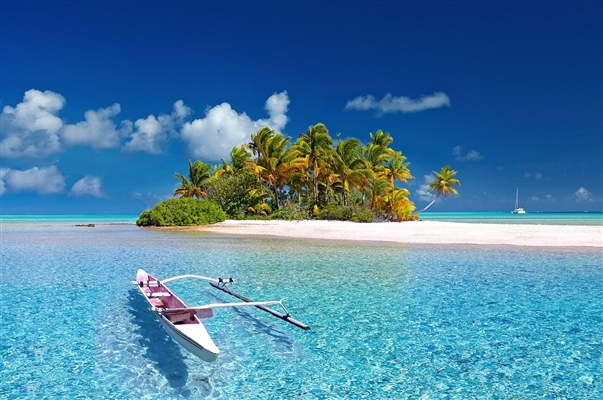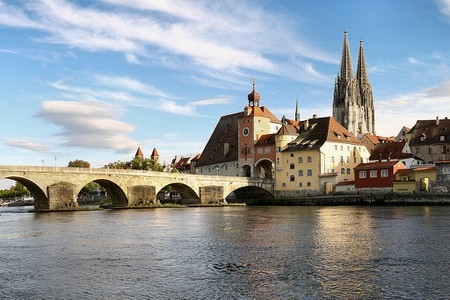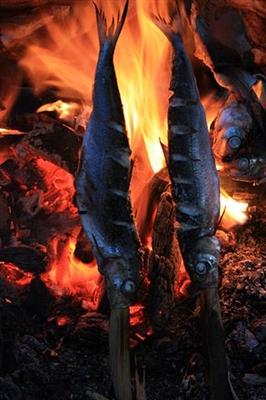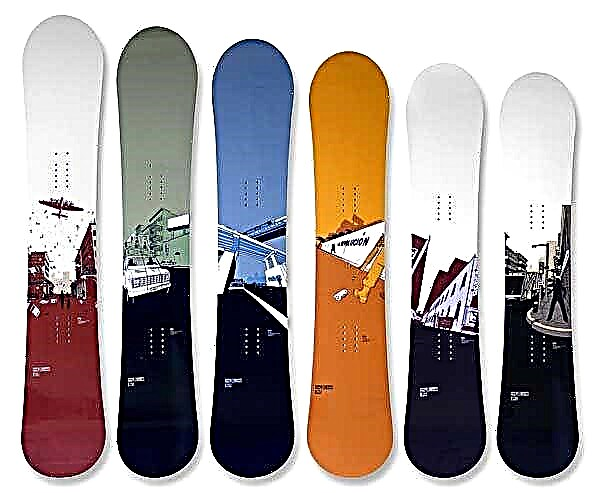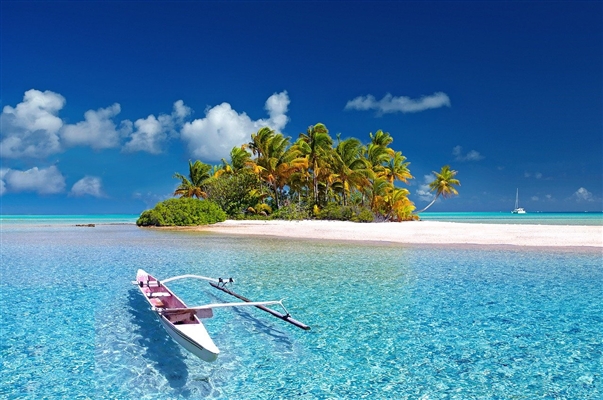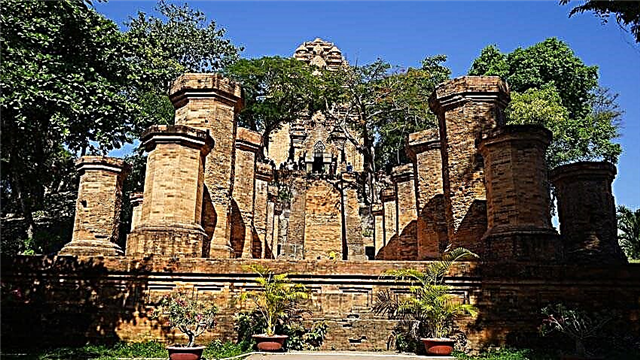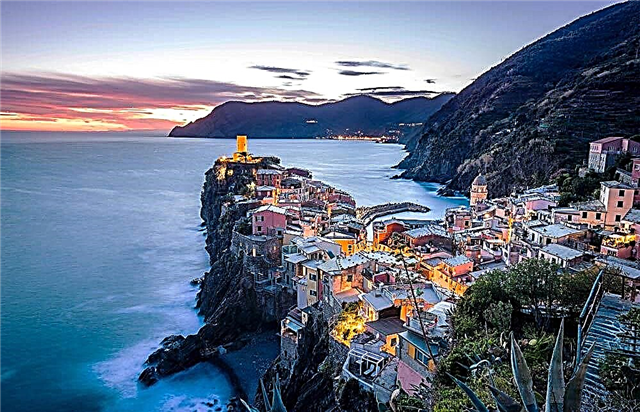A small city, the sights of which, if desired, can be seen in one day - most of the interesting places are compactly concentrated in the historical center. A place not to be missed by any tourist is the Kursk Bulge memorial. It is dedicated to a major battle, in which about 2 million people, 6,000 tanks, 4,000 aircraft took part. The memorial complex is about two kilometers long.
You should definitely visit the Kursk Red Square and Lenin Street. Here you can see the unusual House of Books, a monument to the Kursk apple, the Drama Theater named after Pushkin, near which a monument to the poet is erected. There are both traditional museums in Kursk - local history, literary, and with an unusual theme - dedicated to the Kursk nightingale. Churches and temples of the 18th century have survived, including the Korennaya Hermitage in the suburbs.
The most interesting and beautiful places
List, photos with names and descriptions of the best sights of Kursk. He will help you plan routes and choose excursions to explore the top places of the city and its environs in 2-3 days.
Memorial complex "Kursk Bulge"
Located on Victory Avenue. The memorial was created in honor of the soldiers who died during the Battle of Kursk. The monument was opened in 1998. The central object of the complex is the Triumphal Arch with a height of 23.5 meters. There are sculptures of a tanker and an infantryman from the time of the Battle of Kursk, a grenadier and an ancient Russian warrior. The complex includes a monument to Marshal Zhukov, the Eternal Flame, the Alley of Military Glory, the Temple in honor of St. George the Victorious.

Recommended: The best sights of the Kursk region.
Red Square
The main square of the city, from which its central streets begin. Founded in 1782 by order of Catherine II. The dominant of the modern architectural ensemble of the square is the House of Soviets, in which the regional administration is located. Other notable buildings are the Communications House 1960, the Office of Bailiffs built in 1933. Monuments to Lenin and Alexander Nevsky were erected, the Stele of Glory in memory of the heroes of the Kurds.

Znamensky Bogoroditsky Monastery
The monastery on Lunacharsky Street was first mentioned in historical documents in 1613. Founded on the site of the Kursk Kremlin. Among the buildings of the monastery, buildings with the status of an architectural monument are especially interesting. The Cathedral of the Sign in the style of classicism was erected in the years 1815-1826. The Church of the Ascension of the Lord was built in 1875, it has a bright color in the Byzantine style. A local history museum is located in the house of the bishop in 1833.

Lenin Street
The oldest street in the city is almost 2 km long. In the town planning documents of 1752, it was called Bolshaya Moskovskaya and ended at the Moscow Gate, from which there was a road to the capital of the country. The ancient buildings of the street were almost completely destroyed during the hostilities of the Second World War. At the same time, many structures of the middle of the 20th century are architectural monuments and are of interest to tourists.

Art Gallery named after A. A. Deineka
The gallery's collection contains more than 8500 works of art - both Russian and Western European. You can see paintings by Levitan, Kuindzhi, Tropinin, Polenov, Kramskoy. The expositions of the museum include not only painting, there are also graphics, sculpture, folk and decorative and applied arts. The gallery pays special attention to the works of Kursk masters; Deineka's canvases are presented as a separate exposition. There is a collection of icons from the 16th-20th centuries.

Park "Boeva Dacha"
At the end of the 19th century, this place was the estate of the merchant Boev. In 1934, the former summer residence was ennobled, turning into a well-groomed park named after the 50th anniversary of the Komsomol. They smashed the alleys, set up a boat station, installed beautiful sculptures and benches. Now it is a quiet and cozy green area in the city center. The beach area has been landscaped, there are sports and children's playgrounds, bicycle rental.

Memorial "In memory of the fallen in the Great Patriotic War of 1941-1945"
It is located on the Heroes' Square of the Battle of Kursk. It is a high obelisk of Glory, which is crowned with a five-pointed star. Next to it is the bowl of the Eternal Flame. An alley with steles is laid to the obelisk, on which the helmets of infantrymen, helmets of tankers and pilots are depicted. A monument to the Unknown Soldier is installed on the mass grave. The monument is located among firs and beautifully decorated flower beds.

Anatoly Deriglazov Square
Located in the Northern microdistrict. The monument to the tinned builder and the former head of the Kursk plant KPD was installed in 2014. Masters from different cities worked on the sculpture - Rostov, Moscow, Tver, Belgorod. The total height of the monument is 6 meters. The linden alley, on which the monument is located, is beautifully decorated with landscape zones, benches are installed. Nearby is the Sretensky Church named after St. Martyr Anatoly.

Wind power plant Ufimtseva
The first wind farm in Russia was built in 1931. The project was developed by the inventor Ufimtsev. It is a complex structure 42 meters high with many newly developed mechanisms. For several years the station worked flawlessly, supplying electricity to the workshop and the estate of Ufimtsev. In 1957, the work of the station was terminated. Now the cultural heritage site is being restored by enthusiasts from the DTT center.

The estate of Count Nelidov
The palace and park complex is located in the village of Mokva. The estate was founded by the governor of Kursk A.I. Nelidov in the XIX century. In a picturesque oak forest, he laid out an English garden, created a system of ponds and built a palace in the style of Russian pseudo-Gothic. The surviving buildings of the estate look like an old knight's castle - towers with battlements, loopholes, lancet windows. Currently, a dispensary is located within the walls of the estate.

Ermoshkino lake
A pit of artificial origin, created during the construction of a thermal power plant in the 1950s. It is located in the microdistrict of the Knitwear Factory. The depth of the lake reaches 10 meters, its area is 60,000 m². The lake shore is landscaped for summer holidays - on the sandy shore there are sun umbrellas, toilets, benches, a playground for games. Swimming in the pit is permitted by the official services. The water in the lake is already warming up in June.

Architectural landmarks of Kursk
Among the monuments of architecture and urban planning, a prominent place is occupied by the building of the Nobility Assembly and the Central Bank of the region. Houses of the 20th century are interesting on Lenin Street.
Building of the Noble Assembly
Located in the historic center of the city. It is not in vain that this elegant red-and-white eclectic building is considered one of the main architectural landmarks of the city. In its appearance, features of the Renaissance and Baroque are mixed. The building was built in 1877. Its facade is unique - its openwork pattern is made using figured bricks and small decor details. It is decorated with pilasters, cornices, pillars, a powerful attic, and vaulted windows.

Building of the Main Directorate of the Central Bank for the Kursk Region
The two-storey building of the Central Bank is a decoration of Lenin Street. The appearance of the house bizarrely mixed different architectural styles - Gothic in general, romantic turrets and semi-columns, Slavic majolica, modern decor details. The construction of the building was completed in 1913. It was planned to employ 150 bank employees. The interiors are decorated with stucco moldings on the walls.

House of Soviets and a monument to V.I.Lenin
Located on Red Square. The building of the House of Soviets began to be built in 1939, but due to hostilities, the construction ended only in 1947. It was erected in the style of classicism that was then adopted for office buildings. The monumental building looks imposing because of the row of snow-white columns.The monument to Lenin was erected in front of the House of Soviets in 1956; it is considered one of the best monuments to the founder of the USSR in the country.

Railway station building
The construction of the first railway station in Kursk was completed in 1869, but in 1946 it was destroyed during the bombing of the city. The restored station building began work in 1952. The project architect is Igor Yavein, Doctor of Transport Architecture. According to his design, the station building became a monument to the railway workers who participated and died in the Kursk battle. The walls are decorated with a military bas-relief, sculptures of warriors are installed.

Book House
An apartment building built in 1951, a heritage site of culture and architecture. It was erected in the Stalinist Empire style in 1951. Located at the intersection of Bebel and Lenin streets. The building, which has become the property of the architectural appearance of the city, was built according to the project of the young specialist Teplitsky. It is distinguished by an abundance of decor. A massive stucco facade was made, busts of Russian writers were installed on the pedestals.

Churches and temples of Kursk
There are many beautiful churches in the city, which are the adornment of Kursk. Churches belong to different directions of religion; the Holy Trinity Monastery serves as a place of religious life and pilgrimage.
Resurrection-Elias Church
A small cozy church in a traditional classical style is located near the House of Books. The stone church was built in 1768 on the site of a 17th century wooden church. Until 1833, it was the main city cathedral. From 1926 to 1995, the city archives were located in the religious building. At this time, the church lost its bell tower and portico. Decorations of the restored building - stucco molding on the windows and stained glass on the front door.

Sergius-Kazan Cathedral
Located on Gorky Street. Built in the middle of the 18th century in the Elizabethan Baroque style. The temple looks original because of the ribbed domes, windows of different sizes, torn gables. It is believed that the building was designed by one of the famous Rastrelli's students. A gilded iconostasis 18 meters high, made by serf woodcarvers, has survived to this day. The bell tower of the cathedral is 46 meters high.

Church of the Assumption of the Virgin
Catholic temple located in the city center on Marata street. The church was built at the end of the 19th century in the traditional Gothic style for Catholics. The red brick building is richly decorated with mosaics, there are 27 crosses on its portal, and the roof is crowned with two pointed turrets. The famous avant-garde artist Malevich was married in the temple. Residents of the city appreciate not only the interesting view of the temple, but also the organ concerts that take place there.

Vvedenskaya church
Built in 1761 on the site of the 1647 church destroyed by the Crimean Tatars. When restored, it was given the appearance of a previous temple. The Orthodox Church is a regional architectural monument. In the period from 1939 to 1941, the church lost its fence, bell towers, the interior decoration and murals were damaged, church utensils and icons were lost. The restoration of the bell tower took place in 2007.

Holy Trinity Monastery
The convent on Gorky Street was first mentioned in chronicles in 1623. At this time, he was already quite well developed. The architectural ensemble of the monastery took shape over several centuries and is an excellent example of the skill of the architects of the 17th-19th centuries. Many elders who became famous far beyond the borders of Kursk lived within the walls of the ancient monastery. The relics of saints are kept in dozens of icons.

Gardens and parks of Kursk
There are not so many large landscaped parks in Kursk. Among the popular places where locals like to relax are "Boevu Dacha", Children's Park and the Park named after May 1.
Children's park
Also known as Pioneer Park. Founded in 1927 on a vacant lot near the Drama Theater. Most of the work on the improvement of the territory was carried out by the public figures of the Kursk youth. Pioneer events, competitions and holidays were held on the territory of the park. The most interesting place in the park is a platform with wooden figures of fairy-tale characters, animals, and mythical creatures.

Park named after May 1
Located in the city center near Red Square. A public park on this site was laid out in the 19th century. Varya Panina, Nadezhda Plevitskaya, Maxim Gorky performed on the stage of the Summer Theater in the park. Now it is one of the favorite places to spend leisure time among the people of Kursk. Beautiful flower beds are planted among the alleys, there are many attractions for children. A monument to Alexander Nevsky is erected at the entrance to the park.

Park of Heroes of the Civil War
The first trees were planted in this place back in 1923. Then the barns of the merchant Byrdin were located here. In the center of the park there is a mass grave of citizens who died during the invasion of Kursk in 1919 by Denikin's troops. During the Great Patriotic War, German troops buried their soldiers in the park. Now, on the site of the Mass Grave, the Eternal Flame is burning and a monument to the Heroes of the Revolution is erected.

Interesting museums in Kursk
Popular museums in the city that are definitely worth a visit.
Kursk Museum of Local Lore
Located in an old building of the 19th century on Lunacharsky Street. Dedicated to the history of the region, its outstanding personalities, nature and culture. The museum contains about 180,000 exhibits. Unique collections will be of interest to visitors of different categories and designs. There are sections of ethnography, archeology, bright folk costumes of Kurds and clay household utensils are exhibited. The large exposition is dedicated to the Great Patriotic War.

Kursk Museum of Archeology
It occupies the walls of an architectural monument of the 18th century - a former merchant mansion on Pionerov Street. Local legends say that a large network of underground passages begins from here, which stretches across the entire Kursk. The exhibits of the museum belong to different time periods. There are artifacts from the Stone Age and the Middle Ages. In the center of all expositions there is a large diorama telling about life on the territory of Kursk 22 thousand years ago.

Literary Museum of Kursk
Located in the old restored mansion of the merchant Sofia Davydova on Lunacharsky Street. The opening of the museum took place in 2009 and since then it has been one of the most beloved museums among the townspeople and guests of the city. Exhibits are housed in 8 rooms, there is a large library and a conference room for events. The museum's collections are dedicated to the works of Raevsky, Gaidar, Nosov, Vorobyov, and tell about the life of Abbot Theodosius of Pechersky.

Museum "Kursk nightingale"
The songbird has long been considered the symbol of Kursk. The museum in honor of the Kursk nightingale was opened in 2007 on Sadovaya street. More than 1000 exhibits dedicated to the nightingale are collected here - photographs, documents, clay toys, recordings of a nightingale singing, there is a real nightingale's nest. The exposition telling about the Nightingale the Robber will be especially interesting. It is believed that the famous fairy-tale character was originally from Kursk.

Museum of A.G. Ufimtsev and F. Semenov
Museum visitors will learn about the life and work of the famous inventors of Kursk - Semenov and Ufimtsev. On display are a model of the telescope made by Ufimtsev and their other inventions, compasses and locks, documents and photographs. You can see the published joint works of Semenov and Ufimtsev. The museum is located next to a 42-meter-high wind farm, built by Ufimtsev with the help of Semenov.

The main theaters of Kursk
The city boasts its own drama theater, which is one of the oldest theaters in the country. Popular cultural venues are located in the premises of the State Philharmonic.
Drama Theater named after A.S. Pushkin
Founded in 1792, it is one of the oldest theaters in the entire country. Then it was an amateur serf theater. Now in the repertoire of the theater there are about 20 permanently shown performances, annually about 5-7 premieres are presented to the audience. The theater building on Lenin Street was built in 1983.Its appearance combines classical and modern styles; a sculpture of the goddess Nika is installed on the roof, 8 meters high.

Kursk State Puppet Theater
Founded in 1944, in difficult times for the country, when the city's residents needed a place to escape from the tragedies. The actors and directors made the dolls and the necessary props with their own hands. In 1965 the theater received its own building on Radishchev Street. Now it is a theater loved by young spectators, where they can immerse themselves in the magical world of a fairy tale. The repertoire includes 40 performances for children and several performances for adults.

Kursk State Philharmonic
The main concert venue is located on Perekalsky Street, the second - on Sonina Street, in the former building of the Noble Assembly. More than 20 groups work for the audience - orchestras, folk song and jazz ensembles, dance ensembles, instrumental soloists, vocalists, masters of the artistic word perform. An international jazz festival is held annually, ending in the capital.

Children's attractions of Kursk
There are two places in the city that will definitely not leave indifferent parents with children. This is a water park and a large amusement park "Play Ventura". The traditional place to go is the city circus.
Aquapark "Miracle Island"
The indoor water entertainment complex was built in 2008. It maintains a temperature of + 28 + 30 degrees. Visitors are offered 5 water slides, "slow river", wave pool, jacuzzi and hydromassage in the main pool. You can take a break from active entertainment in the lounge area with sun loungers. There is a SPA area, a Finnish sauna and a Turkish hammam, a salt cave. There is a separate children's water town.

Kursk State Circus
The grand opening of the new building of the circus in Kursk took place in 2011. Since then, he regularly gathers a full hall of spectators. The modern building is equipped with professional high-tech equipment, which allows showing not only traditional performances of clowns, acrobats and illusionists, but also bright ice, water and light shows. The capacity of the hall is 2000 people, there are points selling food and souvenirs.

Amusement Park "Play Ventura"
Indoor amusement park with an area of 20,000 m². It presents attractions for different visitors. The carousels are combined into two zones - family and extreme. There is a laser tag, a go-kart track and a climbing wall. Children will be especially interested in the three-level labyrinth town and the pirate ship in the center of the lake. Rope town and rollglider trails were laid over the water, several water slides were erected.

Monuments and sculptures of Kursk
On the streets and squares of the city there are monuments and monuments dedicated to historical events. There are interesting modern sculptures in the city.
Stele "City of Military Glory"
Memorial, perpetuating the memory of the feat of Russian soldiers during the Battle of Kursk. The tall column was installed in 2010 in honor of the awarding of the honorary title of the City of Military Glory to Kursk. The stele was installed in the memorial complex on Pobedy Avenue. The obelisk, crowned with the coat of arms of the Russian Federation, is installed on a square pedestal. On either side of it are two cartouches - with the city's emblem and the text of the decree of the President of the Russian Federation.

Monument to Kursk Antonovka
The original monument to the apple was erected on Lenin Avenue. The opening of the sculpture in 2008 took place during the celebration of the Apple Savior. It is a huge gilded copper apple weighing 150 kg. Its height is 2 meters. The sculptor V. Klykov depicted the fruit quite naturally - with a stalk and a leaf. Tourists like to take pictures with an unusual monument, local residents are proud of it.

Memorable Sign to the Hero-Pilots of the 16th Air Army
Installed in 1975 at the intersection of Soyuznaya and Aeroportovskaya streets. The memorial is dedicated to the pilots who fought in 1943 at the Kursk Bulge. The opening of the monument was attended by the Heroes of the Battle of Kursk - Odnobokov, Golovin, Polunin. The monument was made in the style of Soviet modernism by the sculptor Kuzovlev. Its three pylons are made in the form of aircraft wings and from a distance the monument looks like an attack aircraft soaring into the sky.

Monument to Yuri Nikulin and M. Shuydin
Opened in 2011. The monument to the great clowns was erected near the Kursk circus. The author of the monument was the local sculptor Igor Minin. He depicted one of the scenes of the famous number "The Horse". The commemorative plaque near the sculpture also mentions the front-line achievements of the circus artists. Nikulin served in the artillery troops, and Shuydinov was a tanker. The opening of the monument was attended by figures of culture and art, politicians.

Monument to E. Nosov
It is located on Chelyuskintsev Street, not far from the house on Blinov Street, where Nosov lived. Its opening in 2005 was timed to coincide with the 80th anniversary of the writer. The design of the monument was chosen at a competition, the winner of which was the work of Vladimir Bartenev. Before creating the monument, he studied many photographs of the writer. The sculptor depicted Nosov sitting in the bosom of nature in a thoughtful form.

Monument to Lieutenant Rzhevsky
Dedicated to a fictional person, the hero of numerous anecdotes and the character of the play "Once upon a time" by A. Gladkov. The sculptor from Belarus V. Zhbanov became the author of the monument erected in 2010 on Shchepkina Street. The humorous lieutenant is depicted sitting on a horse bench and twisting his mustache with a graceful gesture of the index finger. It is popularly believed that if you rub this finger, your cherished desire will be fulfilled.

Monument to Alexander Nevsky
Designed by sculptor V.M. Klykov. Installed in 2000 for the 780th anniversary of the great commander. The monument is located in the park to them. The 1 of May. The Grand Duke holds a waving banner in his hand. The sculpture is installed on a high snow-white pedestal, into which a time capsule is mounted. The commemorative plaque states that it should be opened in 2120. The initiators of the installation of the monument are social activists from the Order of Alexander Nevsky.

Attractions in the vicinity of Kursk
There are interesting places near the city where you can go on an excursion. This is the Root Hermitage and the estate of A. Fet. A little further away from the city, there is another top attraction of the region - the Maryino estate.
Estate of Maryino
Near the village of Ivanovskoye, about 100 km from Kursk, there is a beautiful palace and park complex that belonged to the princes Baryatinsky. The estate was built in 1811-1820 in an eclectic style. The center of the general ensemble is the main three-storey house with luxurious decoration. Inside, marble floors, fireplaces, and stucco moldings have been preserved. There are two lakes with islands in the park at the estate. On the islands there is a church and a rotunda of 16 columns.

Indigenous desert
Monastery 30 km from Kursk. It was erected on the banks of the Tuskar River in the 16th century on the site of a wooden chapel of the 13th century. The wooden buildings of the monastery burned down during the invasion of the Crimean Tatars in the 17th century, but after a few stone churches were erected. In 1991, Patriarch Alexy II visited the monastery, calling the Root Hermitage the third most important spiritual center in the country. Thousands of pilgrims come here every year.

Museum-Estate of A. Fet
Located in a picturesque secluded natural place near the village of Vorobyovka, 40 km from the city. Turgenev and Tchaikovsky visited the estate, admiring the wonderful landscapes. Fet lived in an old two-story house for many years, which became the best in his creative life. The rooms of the house recreate the atmosphere of the poet's life. Poetic events and festivals are held - "Nightingale Night" and "Fetovskie Readings".


